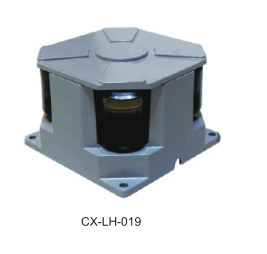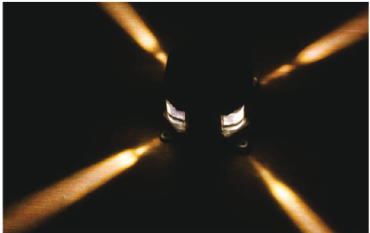Analysis of the development of acoustic simulation software
The development of acoustic simulation software comes from two aspects. First, equipment manufacturers such as Bose, L-Acoustics and Yamaha provide software along with related equipment, and on the other hand, independent software development organizations such as Catt, EASE, Odeon and Ulysses. keep trying. Although these programs are unique, their research and development directly affects the professional audio field, and provides a more reliable guarantee for the prediction of the state in which a device will work in a certain site.
Most independent solutions originate from the research and development activities of educational institutions. For example, Odeon was originally the result of a collaboration between the Institute of Acoustics and Technology of the Technical University of Denmark and some companies with accurate room acoustics requirements. The start of EASE's research and development is the result of a joint effort between Dr. Wolfgang Ahnert of the Cultural Architecture Association and Dr. Rainer Feistel from the Institute of Theoretical Physics at Humboldt University in Berlin. Their team is dedicated to writing acoustic modeling programs for simulation delays and Level adjustment for large speaker systems.
“The functionality of the early Odeon was very primitive compared to the present,†said Claus Lynge Christensen, director of R&D at Odeon A/S. "In fact, 1984 was still a childhood of computers, and its performance did not allow you to do things that seem very simple today. So the calculations for these models are not mature, they are only very rough estimates."
“EASE 1.0 in 1990 is a difference between bicycle and car in 2011 compared to EASE 4.3,†added AFMG Technologies General Manager Stefan Feistel. “You can easily get the results you want, but the speed and quality are very different.â€
The development of personal computer performance has also made modeling software gradually become an indispensable weapon for designers from a icing on the cake. We know that the stereo view effect is the advantage of current software, but the essence of this advantage lies in the processing speed and new functions, such as the statistical function of frequency scattering.
"The graphics capabilities of these software are gradually increasing as the PC evolves. The same is true for the user interface," said Pat Brown, chairman of educational institution Synergetic Audio Concepts. “The display interface is getting better and better, and the calculation time is just a fraction of the original.â€
“It’s important to include software updates, including CAD modeling,†adds Mr. Christensen. "More advanced algorithms must be built around this technology, such as diffraction around statistical objects, distance-related parameters, actual listening simulations, conventional speaker simulations, and line array speaker simulations."
These technological advances have provided great help to system designers. “Computer analysis and design of complex speaker systems and harsh acoustic environments saves time and money. It can deliver specific system solutions at near-zero cost,†says Mr. Feistel. “ Equally important, it helps users understand the interrelationships between speakers, the effects of room acoustics, and the potential for optimization.â€
“By using advanced room acoustic simulation software like Odeon, you can not only understand how the system direct sound will cover the audience area, but also how the system performs in a specific house. It will be the room geometry, surface material and The sound system is also included in the calculations," adds Mr. Christensen. “In fact, you might even hear the sound design through headphones.â€
But even if the technology is so advanced, the most important part is still the end user, and the accuracy of the software will cause certain problems. “If the system designer is not capable, these quick calculations and the results presented to them through beautiful graphics can be completely wrong,†Mr. Brown said. "Unless the designer understands the mechanics of these algorithms, they can't know what they want to simulate and what to believe."
“Today, the potential problems encountered in functions used to simulate calculations are no different than they were 20 years ago,†he continued. “These programs treat the sound as a beam of light and predict the radiation of the light through the law of light propagation,†explains Mr. Brown. "This assumption is more suitable for high frequencies, but it does not work for low frequencies. There is a gradual change between the two. This means that the modeling software program may give a good high frequency unit simulation, completely Wrong ultra-low speaker settings and versatile IF speaker settings," said SynAudCon's chairman.
For the challenge of accurately simulating the propagation characteristics of low-frequency sounds, major manufacturers are actively responding in order to obtain a good solution. “We are making rapid progress in modeling low frequencies, and some small rooms like studios can already be accurately modeled,†says Mr. Feistel. “This will be the most distinctive place for EASE 5.0.â€
Mr. Christensen is equally aware of this problem. “Odeon is based on high frequency modeling, which means it can't make accurate and reliable predictions in low frequency regions. This modeling is not suitable for analyzing the main problems of small rooms such as low frequency dyeing,†he explained. “We are looking for other ways to model the sound radiation characteristics of the entire room.â€
“Acoustic modeling requires you to understand the sound, they are just a calculator,†explains Mr. Brown. "They allow the designer to try to simulate a real space, but it can't make a design decision. If you don't know what it is, then the model you get may be meaningless and the design may fail. A designer needs electroacoustic knowledge to get meaningful results from modeling software,†says Mr. Brown.
“As we did 30 years ago, a basic tenet is 'garbage input, garbage output',†adds Mr. Feistel. "That means modeling software is just a tool, not a silver bullet. It's a complicated calculator, but it's limited to it. If the user can't make a decision or can't interpret the calculation, EASE won't be able to help. â€
The development of related software provided by the device manufacturer shows the functions of their speakers and the entire system. “When Yamaha launched its Installation series of speakers, we wanted to show our customers the best solution for installing our speakers with Y-S3 simulation software. This took advantage of our knowledge and experience in acoustic design,†Yamaha Asia Pacific Sound reinforcement Shinya Uchida, head of marketing and marketing, said.
“Our first concept is to show the simulation results in a few simple steps, which hasn't changed since the beginning. Users can get the simulation results by choosing the room shape, speaker model and output mode,†Mr. Uchida continued. “As the software gets updated, the number of speakers that can be simulated becomes more and more. At the same time, the analog mode is continuously enriched with the update. The Y-S3 has several modes for users to choose from. Mode, all speakers will automatically adjust settings without having to change the settings one by one."
“Another technical achievement behind the software is the increasing accuracy of automatic debugging and the speed of the algorithm. There are also user interface and operational improvements, such as helping users select a speaker or amplifier. Avoid new features such as mismatched collocations."
This concept of helping users understand the sound state of the final system can also be found in Bose's Modeller software. As software developed independently by each manufacturer, the technology used by the software allows system integrators to see different situations throughout the design phase of the system and predict what the final sound will look like.
Of course, it is not just these acoustic simulation software that affects manufacturers. Accurate data is also extremely important. “Consultants, designers and builders all over the world need the data provided by EASE to work,†Mr. Feistel said. “This also makes it necessary for manufacturers to understand the technical details of their products and to measure the equipment in a professional way to provide data that the software can rely on. Although the development in this area is slow, a company with strict rigor is bound to provide it. Highly accurate data for a full line of products."
“Acoustic modeling results in accurate predictions based on speaker design parameters and room characteristics, which shifts the actual errors that may occur during the installation process to the computer simulation phase,†Mr. Christensen once again highlighted the acoustic simulation software throughout the industry. The importance of it. “This allows the problem to be solved before it occurs, while allowing us to experiment with different solutions. These solutions are related to room geometry, building materials and sound systems. With these parameters, the test software provides better accuracy and efficiency. And an economic solution."
Nevertheless, Mr. Feistel still believes that “any sound system needs to be calibrated by actual listening. It is impossible to design a system completely through the previous simulation. Of course, if a person who understands the software principle can properly With this tool, the results you get will be very close to reality, and terrible mistakes can be avoided. But people must use their brains, ears and eyes to supplement complex computer calculations."
LED point light source is a new kind of energy conservation and environmental protection decorative light, using LED cold light source, the built-in microcomputer chip, can be arbitrary programming control, multiple synchronous change, monochromatic changes can also be realized synchronous colorful gradient, jump, scanning, running water light color change effect and multiple LED point light source form a lattice screen.All kinds of pictures, text and animation effects can be changed. It is a supplement of linear light source and flood lighting, which can meet the design requirements of the point line surface.


Product size

Led Point Lamp,Blue Point Led Lamp,Led Point Ovale,Led Blue Point
Jiangsu chengxu Electric Group Co., Ltd , https://www.satislighting.com